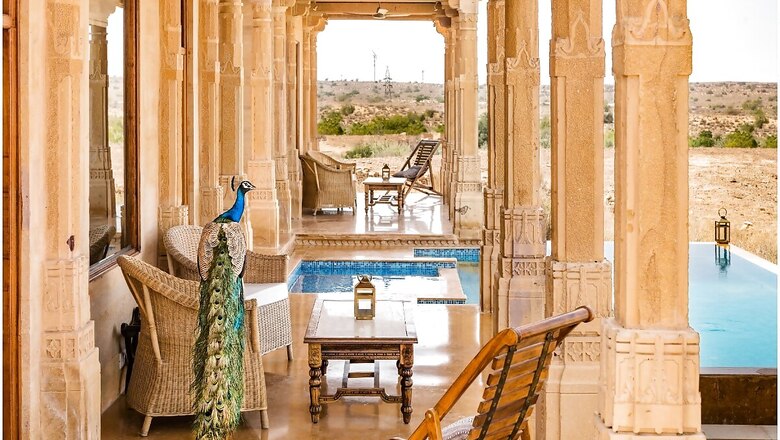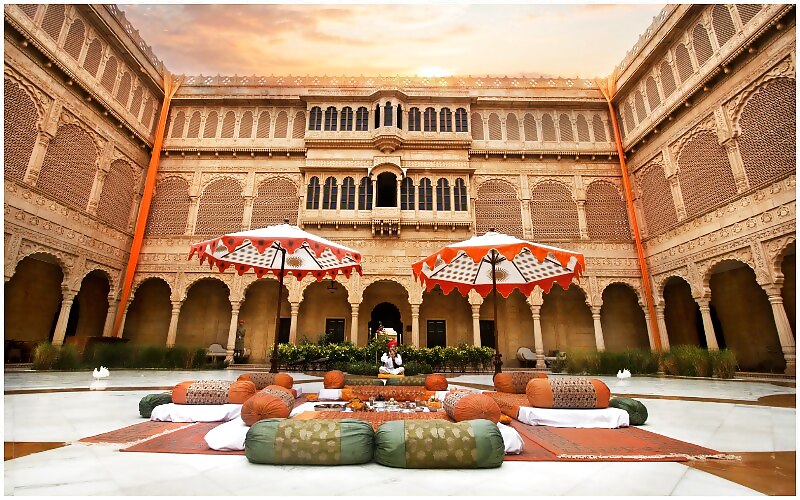
views
After almost seven months of the Covid-19 pandemic locking India down, I reluctantly accepted a dinner invitation from one of the top hotels in New Delhi. The slight hesitation came from the fact that the virus is still very much in the air, and the pandemic is far from over. But, after having spent far too long in the confines of the residential complex and the market nearby, the temptation of a casual, indulgent dinner, albeit with the tag of ‘the new normal’, was enough to give in to. What also added was the intrigue of how this severely ailing hospitality industry is dealing with the present times.
Hesitant first steps
Maintaining the same levels of luxury and warmth, while also being safely distant, is a strange and awkward experience at first. At The Leela Palace, New Delhi, the ‘sUraksha’ hygiene protocol programme is placed right in front of you from the moment you hand the keys over to the valet — who sanitises your seat and steering wheel upon taking over. The staff are all in protective gear, and lead you to a thermal machine that checks and screens you before you enter the lobby. It is a mark of the times that be, and while being welcomed by a big, display-laden screening machine can never scream warmth, it is inevitable.
Even from here to the dining halls, there’s no direct physical contact with any person. The menus are all integrated into QR codes, all crockeries and cutleries are placed in pre-sanitised paper bags, and tables have more than just six feet between each other.
Uniform hygiene protocols
Like The Leela Palace, most luxury hotel chains are adopting similar proprietary programmes to instill confidence among those looking for a weekend stay, or even walk-in diners. ITC Luxury Hotels, for instance, have launched a programme labelled ‘WeAssure’, in line with the chain’s motto of ‘Responsible Luxury’.
On this note, Anil Chadha, chief operating officer at ITC Hotels, tells News18, “Our entire team has gone through a rigorous training process, in order to be able to maintain the hygiene standards. This is to ensure that both guests and associates remain healthy and safe. Protocols and government guidelines have been detailed for everyone’s safety, including use of the Aarogya Setu app. We have also placed UV sanitisation boxes at our hotels to disinfect additional items, including cash.”
One of the ways in which ITC Hotels is looking to get the revenue flow back is its revamped food delivery model, ‘Gourmet Couch’, that brings indulgent items like ITC’s iconic ‘dal bukhara’ to your home. The chain is also attempting to promote easy-to-assemble meals under the ‘Gourmet In You’ DIY banner. These are essentially food boxes that come neatly labelled with cooking instructions and ingredients, and can be put together without much hassle.
Other hospitality initiatives include the launch of their own food delivery app by the Taj group of hotels under Indian Hospitality Corporation. Nayan Seth, general manager at the Taj Palace, New Delhi, says, “With the Qmin food delivery service, nine of our restaurants from our hotels in New Delhi, including iconic favourites such as Spicy Duck and Masala Art, are currently live on Qmin.”
Speaking about how the Taj group has kept doors open through the past months, Seth describes the numerous initiatives that the group’s hotels adopted. Taj opened its food services up for the essential medical services sector, and also offered accommodation to those returning to India in repatriation flights. For guests who were left stranded, Taj’s teams established contactless laundry and dining services — all of which it hopes will serve in striking a strong impression on people. It is this that will further help them come back stronger, in the post-Covid world.

Niche boutique luxuries
While in metro cities, luxury chains can still expect to have business visitors and fatigued casual diners come back in the weeks and months ahead, niche luxury boutique hotels in destination towns have the business placed more precariously. For these properties, such as the Neemrana Fort and Narendra Bhawan in Bikaner, most of their business was dependent on the weekend holidayers, destination weddings and other such customers. Would they be really expecting such casual holiday visitors back with the pandemic being far from over?
Siddharth Yadav, vice president of MRS Hotels, says that his properties are now open at up to 70 percent occupancy, as compared to the 100 percent occupancy rate that they used to attract, especially in the festive months. Yadav hopes that firmer directives, coupled with improvements to the pandemic situation, will help the chain revive its footfall in the months to come.
Aman Nath, founder and chairman of the Neemrana Group, expects properties that are within a medium-duration drive from metro cities will start attracting visitors over the coming months. He says, “Our guests also have the option of contactless check-ins, contactless room service and biodegradable crockery and cutlery. Since the swimming pools and spas will probably not be operational in the foreseeable future, we have created alternate activities for our guests, such as historical property tours, interactive cooking and bartending classes and folk performances. From October, classical dance performances by world-renowned artists will also be brought back to our flagship property, the Neemrana Fort-Palace.”
Adapted luxury
In many ways, luxury hospitality in Covid-19 times are designed to give you a respite from the confines of your home, and the extent of precautions and initiatives taken mean that safety is always at the centre of discussions at these properties. The boutique destination properties will likely have it more difficult in the coming months, but footfall will slowly return. With Unlock 5 lifting intra-state travel restrictions, it now remains to be seen if all this perseverance gives back buzzing lobbies and the indulgent weekend cocktail, that we were all used to.
(Author Vernika Awal is an independent food and lifestyle journalist)


















Comments
0 comment